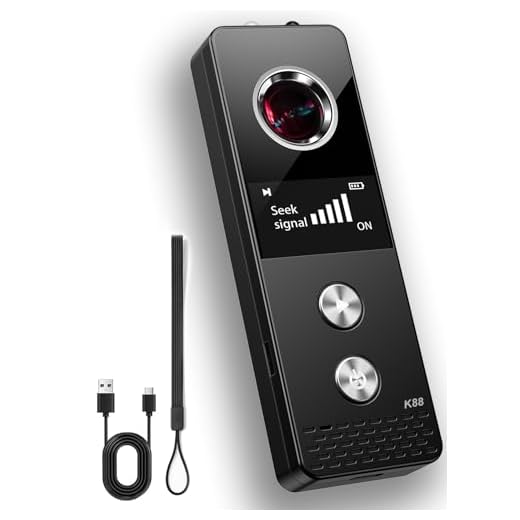




Video surveillance is a common method used by individuals and businesses to monitor and record activities in a particular area. While video surveillance can be a useful tool for security purposes, it can also raise privacy concerns. If you suspect that you are being watched through video surveillance, there are several methods you can use to detect it.
One of the most obvious signs of video surveillance is the presence of cameras in the area. Look for small, inconspicuous cameras that may be hidden in objects such as smoke detectors, alarm clocks, or plants. Cameras may also be positioned in corners of rooms or near entrances and exits to capture footage of individuals entering and leaving the area.
Another way to detect video surveillance is to pay attention to unusual behavior or activity in the area. If you notice individuals monitoring screens or equipment that appears to be connected to cameras, it is likely that video surveillance is in place. Additionally, be on the lookout for wires or cables that may indicate the presence of cameras or recording devices.
Recognizing Hidden Cameras
Hidden cameras can be difficult to spot, but there are some common signs to look for. Keep an eye out for small, unusual objects that may not belong in the environment, such as a smoke detector with a pinhole lens or a teddy bear with a camera. Look for any wires or cables that seem out of place or cameras that are positioned in a way that they have a clear view of the room. Additionally, use a flashlight to scan for reflections on surfaces that could indicate a hidden camera lens.
If you suspect that there may be hidden cameras in a room, consider using a camera detector or a smartphone app that can detect electromagnetic fields or wireless signals. These tools can help you locate hidden cameras that are transmitting signals. Remember to always respect privacy laws and seek permission before scanning for hidden cameras in private spaces.
Checking for Red Lights
One common telltale sign of video surveillance is the presence of red lights on cameras. Many security cameras have small red LED lights that indicate when the camera is recording or in operation. These lights are often visible in low-light conditions and can give away the location of hidden cameras.
When looking for red lights, be sure to scan the area carefully, especially in dark or dimly lit spaces. Look for any small, glowing red lights that may be coming from cameras or other recording devices. Keep in mind that some cameras may have hidden or disguised red lights, so be thorough in your search.
Spotting Suspicious Wires
When trying to detect video surveillance, one of the key indicators to look out for is the presence of suspicious wires. Here are some tips on how to spot them:
- Check for wires that seem to be out of place or hidden in inconspicuous areas.
- Look for wires that lead to unusual or unexpected locations, such as behind a mirror or inside a vent.
- Pay attention to wires that are excessively long or appear to be running along walls or ceilings in a covert manner.
- Be wary of wires that are connected to devices or objects that do not seem to have a logical reason for being wired.
By being observant and vigilant, you can increase your chances of detecting hidden video surveillance through spotting suspicious wires.
Using a Camera Detector
If you suspect that there might be hidden cameras in a certain location, you can use a camera detector to help you locate them. Camera detectors are small devices that can detect the radio frequencies that wireless cameras emit. This can help you identify hidden cameras that are transmitting signals.
How to Use a Camera Detector:
1. Turn on the camera detector and walk around the room or area where you suspect there might be hidden cameras.
2. Pay attention to any signals or alerts that the detector gives off. It may beep or flash when it detects a wireless camera signal.
Searching for Microphones
Audio surveillance is often a crucial part of video surveillance systems. To detect hidden microphones, you can use a few methods:
- Listen for unusual sounds: If you hear buzzing, clicking, or static noises, it could indicate the presence of a microphone.
- Inspect the area: Look for small holes or unusual objects that could house a microphone.
- Use a bug detector: Bug detectors are devices that can detect radio frequencies emitted by microphones. Sweep the area with a bug detector to locate hidden microphones.
Looking for Reflections
Another way to detect video surveillance is to look for reflections. Many cameras have lenses that reflect light, especially in well-lit areas. When you suspect a camera may be present, scan the area for any unusual glares or reflections that could indicate the presence of a hidden camera.
Pay close attention to shiny or reflective surfaces such as mirrors, glass, or metal objects. If you notice a suspicious reflection that seems out of place, investigate further to determine if it could be coming from a hidden camera.
Consulting Professionals
If you suspect that you are being monitored through video surveillance but are not sure how to detect it, consider consulting with professionals in the field. Private investigators, security experts, and surveillance detection specialists can help you identify hidden cameras, bugs, or other surveillance devices in your home, office, or vehicle. These professionals have the knowledge, experience, and specialized equipment to conduct thorough investigations and sweep your premises for any potential threats. By seeking help from experts, you can gain peace of mind and take appropriate measures to protect your privacy and security.






